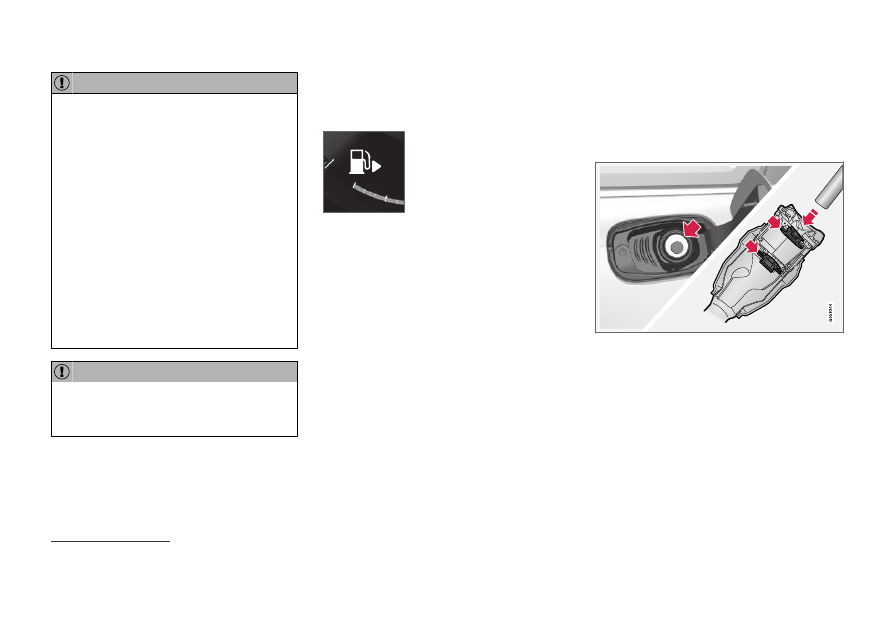Volvo V90 Cross Country (2019 year). Instruction - part 27

||
STARTING AND DRIVING
450
•
Engine damage could occur if water
enters the air cleaner.
•
If water enters the transmission, the lubri-
cating ability of the oils is reduced and
the service life of these systems is short-
ened.
•
Damage to any component, engine,
transmission, turbocharger, differential or
its internal components caused by flood-
ing, vapor lock or insufficient oil is not
covered under warranty.
•
If the engine stalls while the vehicle is in
water, do not attempt to restart it. Have
the vehicle towed out of the water to a
workshop. An authorized Volvo workshop
is recommended. Risk of engine failure.
Because it can be difficult to determine the
water depth, avoid driving through standing or
running water.
Related information
•
•
Opening/closing the fuel filler door
The vehicle must be unlocked before the fuel
filler door can be opened
8
.
An arrow next to the fuel pump
symbol in the instrument panel
indicates the side of the vehicle
on which the fuel filler door is
located.
1. Open the fuel filler door by pressing lightly
on its rear edge.
2. After refueling, press the fuel filler door
lightly to close it.
Related information
•
Refueling
The fuel tank is equipped with a fuel filling sys-
tem without a cover.
Refueling the vehicle at a service
station
Refueling is done as follows.
1. Turn off the engine and open the fuel filler
door.
2. Select a fuel approved for use in the vehicle.
For more information on approved fuels, see
the section on “Fuel”.
3. Insert the pump's nozzle into the fuel filler
pipe's opening. There are two flaps just
inside the fuel filler pipe and the pump's noz-
zle must push both of these flaps open
before fuel can be added.
8
Only locking and unlocking using the remote key, Passive Entry or Volvo On Call will affect the status of the fuel filler door.